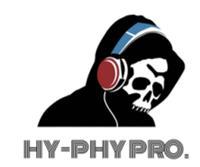Head first
Laura Robyn explains why Skullcandy’s arguments spoke loudest.

These cases concern opposition and invalidity proceedings filed by Skullcandy, Inc., the American developer and manufacturer of audio products, against a trade mark application and registration for the HY-PHY PRO and HY-PHY PRO AAV AUDIO ALL ABOUT VALVES logos in the name of Mr Kef Tesfaye.
The contested marks cover headphones and related amplifiers and connectors, mobile phone covers and earphones in class 9, scooters in class 12 and several clothing and headgear items in class 25.
Relying on its earlier UK designations, Skullcandy claimed a likelihood of confusion exists with its skull logo for its portable media players, speakers, earphones and headphones in class 9, backpacks and handbags in class 18, and clothing and hats in class 25.
It further claimed a reputation and substantial goodwill under the mark in respect of the class 9 goods.
Use evidence

In relation to Skullcandy’s evidence of use and reputation, the Hearing Officer (HO) remarked that:
- A significant proportion of the evidence showed use of the mark not in its registered form, but in “reverse silhouette” (ie, a white skull with black eye sockets); and,
- Various materials were undated, and the veracity of some of Skullcandy’s financial figures, when queried by the holder of the contested marks, was called into question and scrutinised by the HO.

Notwithstanding these comments, the HO decided that the “reverse silhouette” was an acceptable variant use “which does nothing to affect the distinctive character” and that revenue, promotional expenditure and brand awareness were shown to be “quite substantial”.
The mark was found to have been put to genuine use in respect only of earphones and headphones in class 9.
Likelihood of confusion
The HO found identity between the earphones, headphones and speakers in the contested marks and Skullcandy’s protected goods.

The amplifiers, adapters, consoles and cases for headphones were held to be similar to a low degree to Skullcandy’s earphones and headphones in class 9.
The remaining goods were found to be dissimilar. The average consumer for the goods at issue was determined to be a member of the general public paying a medium degree of attention.
The purchasing act was held to be dictated primarily by visual considerations.
The HO agreed with Skullcandy’s assertions that its skull logo mark had, through use, gained an enhanced degree of distinctiveness in respect of the protected goods.
Turning to the comparison of the marks, the HO noted that the marks differed visually in all elements other than the inclusion of a facial aspect of a skull (albeit presented in reverse contrast).
Conceptually, the marks shared the facial front skull message identically, with the HY-PHY PRO word elements likely to be understood as meaning “Professional-quality, high-fidelity headphones”.
Overall, the marks were found to be visually similar to a low to medium degree (HY-PHY PRO) or to a low degree (HY-PHY PRO AAV AUDIO ALL ABOUT VALVES) and conceptually similar to a medium degree. No aural comparison could be made.
Concluding that the enhanced distinctive skull element in this instance went beyond giving rise only to a mere association, the HO determined that there was indirect likelihood of confusion in respect of the identical and similar goods. The claims failed, however, in respect of the dissimilar goods.
Reputation
Applying General Motors1, the HO recalled Skullcandy’s use evidence and remarked that the reputation it enjoys under its skull logo mark “can be said to be a strong one”.
This was found to be a result of Skullcandy’s long, continuous and significant presence in the UK, as well as its extensive promotional activity and generated brand awareness.
Having already concluded that the contested marks would give rise to a likelihood of confusion and that Skullcandy’s mark enjoys an enhanced degree of distinctive character, the HO felt that the requisite link would be made.
Noting its significant position in the UK headphone and earphone market, the HO found that use of the contested marks would take unfair advantage by riding on the coat-tails of Skullcandy’s established brand.
Further, it was held that use of the contested marks would cause damage given Skullcandy’s reputation for quality products. The reputation claims succeeded in respect of all goods covered by the contested marks.
Passing off and bad faith
The HO confirmed that Skullcandy has a protectable goodwill in respect of earphones and headphones under its skull logo mark and that there would be misrepresentation from which damage flows.
This was, however, only the case in respect of the identical and similar goods, as determined under the likelihood of confusion claims.
The passing off claims therefore succeeded only in part, to the same extent as the likelihood of confusion claims.
During the procedural rounds, Skullcandy applied to introduce bad faith claims in both proceedings, which were admitted by the Tribunal.
The additional grounds were based on a statement by the holder of the contested marks that he had created the contested marks using a third-party website, which retained ownership of the designs.
In response to the bad faith allegations, the holder of the contested marks filed a further statement clarifying that he had sought the necessary consent from the website owner to use the logo design.
The HO, applying Red Bull2, decided that Skullcandy’s claim had not been set out sufficiently in view of the seriousness of the allegation. The bad faith claim was rejected.
Finally, the opposition succeeded in its entirety, resulting in rejection of the application and invalidation of the registration.
Although not ultimately material in this decision, this case again underlines the importance of determining the creative origin and potential subsequent transfer of rights in logo marks, as otherwise trade mark applications/registrations are open to challenge on bad faith grounds.
In addition, where there is no likelihood of confusion, a claim for passing off based on the same trade mark is also likely to fall (to the same extent) at the misrepresentation hurdle.
Key points
- A reverse silhouette version of a logo mark was found to be an acceptable variant capable of the registered form
- It is important to determine the creative origin and potential subsequent transfer of rights in logo marks, so that applications/registrations are not exposed to challenge on bad faith grounds
- Absent likelihood of confusion, a claim for passing off based on the same mark is likely to fall at the misrepresentation hurdle





